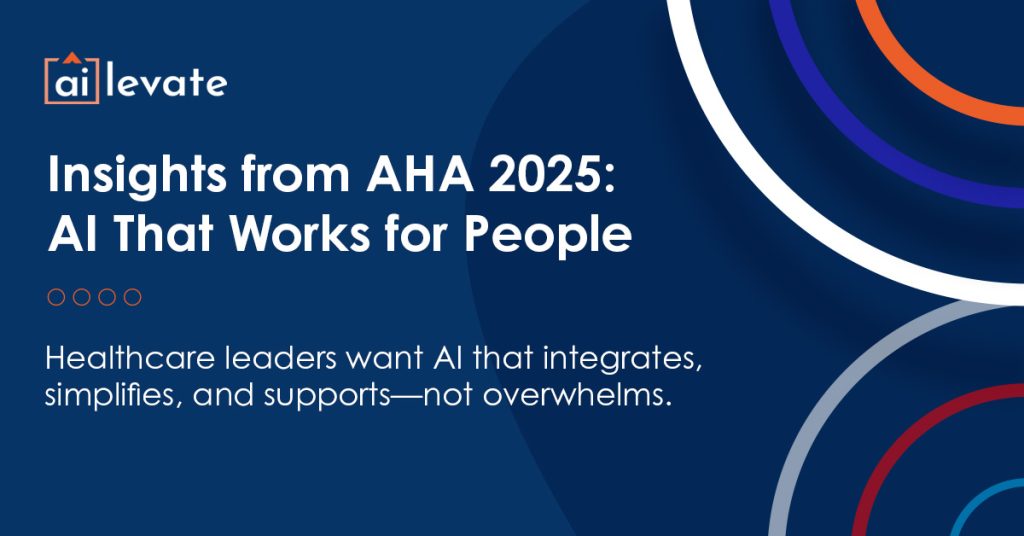The AHA Leadership Summit 2025 in vibrant Nashville was more than just a conference, it was a catalyst for innovation and honest dialogue. Leaders from hospitals, clinical settings, and technology sectors came together to share ambitions, challenges, and lessons learned in integrating AI into healthcare.
One message rang loud and clear: AI isn’t just a tool, it’s becoming essential. And the real magic lies in how it’s implemented.
The Necessity of AI Governance
In today’s healthcare environment, AI governance is no longer optional, it’s essential. Many health systems are proactively forming AI oversight boards to address compliance, risk, and alignment with both federal and state regulations.
Key Insights:
- Understand the governance process before proposing new solutions.
- Align with local and state regulations early to avoid roadblocks.
- Consider developing an internal AI governance toolkit to guide decision-making, ensure compliance, and align stakeholders from the start.
Generative AI: A Glimpse into the Future
Generative AI and ambient voice technology are leading the way in clinical documentation, significantly reducing physicians’ administrative burden and stress. While these tools are already delivering value, there’s still untapped potential across other areas of healthcare.
Key Insights:
- Educate stakeholders on broader AI applications, especially in revenue cycle management and operations.
- Emphasize that AI should augment, not replace, staff.
- Focus on low-risk, high-reward use cases like denial prevention and pre-authorization prediction.
Integration: The Heart of AI Adoption
The biggest barrier to AI adoption? Workflow disruption. Clinicians and staff are overwhelmed by too many platforms. For AI to succeed, it must integrate smoothly, especially with Electronic Health Records (EHRs).
Key Insights:
- Embed AI into existing workflows to minimize friction.
- Keep it simple…less is more for clinicians.
- Prioritize “invisible AI” that works in the background without adding steps.
Burnout: The True KPI
With rising administrative demands, burnout is a critical issue. AI that automates repetitive tasks and streamlines documentation isn’t just helpful, it’s vital for sustaining healthcare teams.
Key Insights:
- Position AI as a burnout-reduction tool that restores focus on patient care.
- Highlight time savings and mental health benefits, not just financial ROI.
- Always keep the human element at the center of AI implementation.
Embracing Failure as a Stepping Stone
From prompt-a-thons to pilot projects, many organizations shared stories of trial and error. The most successful teams are those that embrace failure early and iterate quickly.
Key Insights:
- Start small, learn fast, and scale what works.
- Involve both clinicians and operators from the beginning.
- Don’t wait for perfection, progress beats perfection.
AI Revolutionizing the Revenue Cycle
While clinical AI is leading adoption, revenue cycle management (RCM) is quickly catching up. AI is proving its value in denial prevention, coding accuracy, and payer policy tracking.
Inspiring Examples:
- One provider recouped $3.5M using AI-generated demand letters.
- Ensemble used LLMs to analyze denial trends and reduce future denials.
- AI is helping track nightly payer policy changes to avoid surprise denials.
How Ailevate Is Making a Difference
At Ailevate, we’re not just building AI—we’re building trust. Our platform is purpose-built to solve the challenges highlighted at AHA 2025:
Streamlined integration—no bolt-on bloat
Trained on real-world denial data—no vague promises
Operates silently in the background—no added burden
